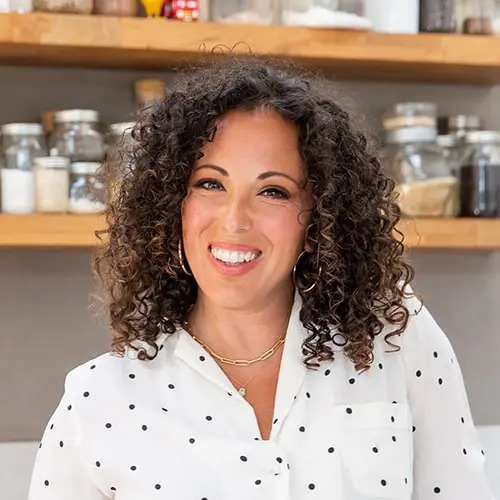In Part 1 of this series, I covered what Candida is (and isn’t) and how it could be present in your body. In Part 2, I covered the symptoms and root causes. Today, we’re going to talk testing for and treatment of Candida.
So, you’ve read Parts 1 and 2 of this series. You understand what Candida overgrowth is, and (I hope!) you even understand HOW it can cause so many systemic symptoms.
And if you’ve made it here to Part 3, you probably suspect that chronic Candida overgrowth is something you could be dealing with.
Today, I want to share how I work with patients in my clinic who present with Candida symptoms. I hope this is helpful to you – and please don’t forget that I’m here for you! My passion in life is supporting women through health challenges like Candida overgrowth so they can overcome them and get on with the stuff that really matters in life!
If you want to learn more, book a free 15 minute consult with my team by clicking here.
Testing For Candida Overgrowth
“Don’t guess, test” is one of my mantras for life.
There are some instances where guessing is perfectly fine – but when it comes to something as vital as your health, why mess around??
Testing is more accurate and affordable than ever before. It ensures we know exactly what we’re dealing with – and aren’t wasting time, money, and energy on the wrong treatments.
With a condition as diverse as Candida overgrowth, testing is especially important. The same symptoms could be caused by hormone imbalances, gut dysbiosis, HPA axis issue, SIBO and more… so bottom line: don’t guess, test!
In my clinic I use a few different tests (depending on the patient).
-
- Stool Tests – not all stool tests can pick up Candida, but advanced ones like the GI-Maps and Genova GI-Effects can. I like to order a comprehensive stool test on all my patients because it can reveal a ton about your overall health – not just candida!
- Organic Acids Panel – This test (I like the Organix test from Genova) looks for D-arabinitol, a specific marker for invasive candidiasis. Some other organic acids panels look for arabinose as a marker instead, but I don’t like those, as they can easily give false positives based on what you’re eating. Organic acids tests are another of my favorite tests because of the breadth of information they can provide (and they’re totally non-invasive!)
- Blood testing – antibodies in your blood can show past or current level of candida overgrowth… but can’t tell you which. (I rarely use blood testing).
- Culture sample – you can take scrapings from the vaginal mucosa, vulva, oral cavity, etc and culture it to identify candida. (Again, I don’t usually use this testing myself).
And this is important – be sure you test BEFORE you complete any treatment for candida. If you’ve recently treated candida, your test will probably come back negative – but that doesn’t mean you don’t have any remaining yeast – especially if it is invasive.
Before You Go Any Further…
When you have Candida overgrowth, your white blood cells produce antibodies to fight the candida called IgE immunoglobulins, which also cause allergic reactions.
More IgE is made every time you have another yeast infection flare. When the IgE reacts against the Candida, it causes the release of histamine. Histamine makes your blood vessels dilate and can cause swelling, redness, itching, and burning (in super fun places like the vagina, sinus, and gut).
When you treat the candida, killing it causes the yeast to release antigens, causing an increase in IgE… which means more histamine symptoms (itching, burning, redness).
Basically – all of this was to say: you’re very likely to experience die-off symptoms when you treat candida!
The bummer is that this WHOLE process weakens your immunity. The increased levels of histamine suppress your white blood cell mediated immunity and inhibit the production of T cells.
This means that supporting your immune system during Candida treatment is absolutely necessary! You must protect and support immunity ON TOP of changing your diet, using antifungals, and doing leaky gut repair.
Don’t forget your immune system in this process!
How I Treat Candida Overgrowth
Step #1: Clean Up Your Microbiome
Before you treat Candida, you need to clean up other gut infections. A stool test can identify which bacteria overgrowths or parasites you’re dealing with. If you don’t get a handle on this first, your Candida treatment won’t be effective!
Probiotics and prebiotics can also help. Lactobacilli bacteria can inhibit the growth of candida albicans (I like the Femecology formula by Vitanica). Both oral supplementation and vaginal use can help.
Step #2: Adapt Your Diet
Most people don’t need to go on a super-restrictive, very low-sugar diet – but most people do need to make SOME changes.
A yeast-free, carbohydrate restricted diet alone won’t cure candida overgrowth. In a study of those with chronic candida, diet and anti-fungals was shown to be the most effective treatment (compared to diet and antibiotics, or diet alone). In fact, antibiotics and diet combined had the WORST outcomes!
For my patients, I recommend:
- 80 grams or less of carbohydrates daily (avoiding refined and processed carbs entirely)
- Avoid dairy (except ghee, butter, and some cheeses)
- Avoid yeast in foods (like kombucha, alcohol, and apple cider vinegar)
- Avoid all refined sugar
- Avoid alcohol
Step #3: Antifungals
To get rid of Candida overgrowth, you must use an antifungal that can kill the yeast overgrowth.
In certain cases, I have seen clients gain greater success by combining natural antifungals with prescription antifungals like Nystatin or Difllucan, for limited periods through the extended herbal treatment period. Nystatin is not absorbed outside of the gut (it is local, not systemic), so it’s a good choice. Most systemic antifungals (like Diflucan) can cause elevations in liver enzymes. If you’re using a systemic antifungal, you need to have liver testing before starting and every 2 weeks of treatment.
But there’s also plenty of evidence that Candida is becoming resistant to antifungal drugs – just like bacteria are becoming resistant to antibiotics. Yikes!
That’s why, I always use a well rounded botanical protocol alongside prescription antifungals to help prevent resistance.
The 2 keys to remember when using natural products like garlic, caprylic acid, undecylenic acid, lauric acid from coconut, lactoferrin, propolis, specific enzymes, and essential oils like oregano and cinnamon:
- Treat long enough! 7-10 days of treatment is not enough. It might clear some symptoms – but you need at least 8 weeks of treatment (sometimes more) to truly clear Candida overgrowth.
- Use the right dosage! If you take natural products in the wrong amounts, you won’t only not get better – but you risk damaging your microbiome. Don’t mistakenly believe they are safe at any dose because they are natural–I’m looking at you, oregano! I highly recommend working with a professional (like me) to get the right doses.
Step #4: Hyphae Interrupters
Remember the “roots” Candida can grow called hyphae? A good Candida protocol should also include something to help hyphae release from the gut wall.
In my practice, I like to use undecylenic acid. It’s a fatty acid obtained from castor bean, and it helps disembed hyphae from the intestinal wall.
Treating Tough Cases
Truthfully, I think every case of Candida is a “tough case.” Most of my patients need the specialized support I can provide after working with Candida overgrowth for years to get better.
For those with repeat vaginal Candida, monthly mid-cycle treatment can help (alongside systemic treatment). We use vaginal treatments for 3 days, and often for 3 more days prior to the start of your period, for 3-9 months to help stop the yeast cycle.
And for those with a history of Candida, we take preventative measures if they have to use antibiotics, corticosteroids, PPIs, or are following an elemental diet (as a treatment for SIBO). Preventative antifungals can help keep Candida at bay!
Need Help With Candida?
We’ve covered a LOT in these 3 articles (make sure you read parts 1 and 2 as well!) and I know you might be feeling overwhelmed.
Are you uncertain if Candida overgrowth could be an issue for you? Not sure what the next step should be? I get it!
My job as a clinician is to take all this complicated stuff and make it easy for you to get better. No more confusion, just results.
I’d love to work with you. Don’t be shy – book a free 15-minute consult with my team. It’s a no-obligation way to see if we can help you. I hope to chat with you soon!
At the Reverse-Age Method, we believe in a holistic approach to perimenopause and beyond, that addresses the root causes of your symptoms (like insomnia, hot flashes, night sweats, erratic periods, fatigue, skin aging, weight gain, and brain fog)– to also slow the pace that your cells are aging. Whether it’s improving gut health, optimizing detox function, enhancing mitochondrial function, or building muscle mass, our comprehensive program has got you covered.
If you’re new here, be sure to check out our Blog Page for more insights and tips on how to thrive during perimenopause. Our blog is packed with practical advice, success stories, and the latest research to help you on your journey.
For more updates and community support, follow us on social media:
You May Also Like...
How To Know If You Have Hydrogen Sulfide SIBO – aka “Hidden SIBO”
Identifying and diagnosing SIBO (Small Intestine Bacterial Overgrowth) is tricky. When it was first discovered, doctors…
Recipe: Grandma Fleischer’s Chopped Liver
Liver. You either love it or you hate it. Or you're too scared to find out. If you ask someone who grew up in a family…
Whether you’re looking for help with your gut, your hormones, or both, our team of practitioners work together to treat the WHOLE you – guiding you to a healthier mind, body, and spirit day by day.



